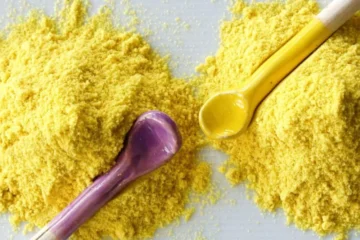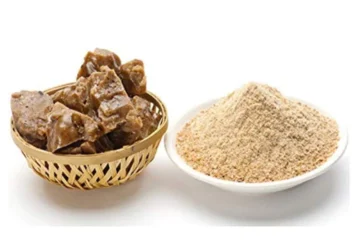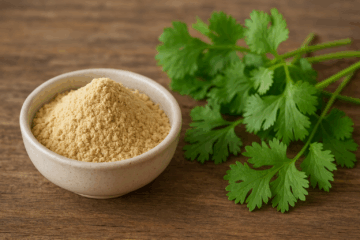Fasting during Navratri or Ekadashi is a spiritual and dietary practice that emphasizes simplicity and sattvic ingredients. Hing, or asafoetida, is a staple in vrat cooking, offering both flavour and digestive benefits. Here are the top insights and recipes for Hing-tempered fasting recipes that you must try.
Is hing allowed during Navratri or Ekadashi fasting — does it follow traditional vrat rules?
Short Answer: Yes, hing is allowed during Navratri and Ekadashi fasting. It is considered sattvic and aids digestion without violating traditional vrat rules.
Long Answer:
1. Hing is widely accepted in fasting diets, particularly in powdered form, as it is considered sattvic. It does not interfere with spiritual practices or the restrictions of vrat. 2. Traditionally, vrat meals exclude onion, garlic, and certain spices. Hing provides aroma and flavour, replacing these ingredients without breaking fasting rules. 3. Its digestive properties make it ideal for heavy or starchy vrat foods such as kuttu (buckwheat), singhara (water chestnut), and sabudana (tapioca). 4. Even small amounts can prevent bloating and gas, ensuring comfort during fasting. 5. Therefore, hing is not only allowed but recommended for enhancing the overall vrat cooking experience.
How does hing improve the taste and digestibility of fasting curries and sabzis — especially when using ingredients like aloo, lauki, or arbi?
Short Answer: Hing enhances flavor, balances bland ingredients, and reduces digestive discomfort in fasting-friendly curries made with starchy vegetables.
Long Answer:
1. Starchy ingredients like aloo, lauki, and arbi can be bland and sometimes hard to digest. A pinch of hing added during tempering transforms their taste instantly. 2. Hing’s pungent aroma makes simple vrat dishes more appetizing without the need for onion or garlic. 3. It acts as a natural digestive aid, reducing gas and bloating often associated with potatoes, yam, or tuber-based sabzis. 4. When paired with ghee, cumin, or green chilli, hing creates a depth of flavor that makes fasting meals both delicious and light on the stomach. 5. Using hing strategically allows vrat cooks to prepare wholesome and tasty meals that are easy to digest, making fasting more enjoyable.
What are some quick hing-tempered sabzi recipes I can make during fasting — ideally under 20 minutes?
Short Answer: Quick hing-tempered sabzis include aloo-hing jeera, lauki with ginger and hing, and vrat-friendly pumpkin curry. All can be prepared in under 20 minutes.
Long Answer:
1. Aloo-Hing Jeera Sabzi: Boiled potatoes tempered with ghee, hing, and cumin seeds. Cook for 10 minutes with rock salt and green chillies. 2. Lauki Hing Sabzi: Bottle gourd sautéed with ghee, hing, ginger paste, and sendha namak. Ready in 15 minutes. 3. Pumpkin Vrat Curry: Pumpkin cubes cooked with ghee, hing, black pepper, and rock salt. Temper with cumin and green chilli. 4. Arbi Hing Fry: Arbi boiled and pan-fried with ghee, hing, and a pinch of sendha namak for 15 minutes. 5. All these recipes require minimal ingredients, are quick to cook, and maintain the sattvic essence of fasting meals.
| Recipe | Main Ingredients | Cooking Time | Special Tip |
|---|---|---|---|
| Aloo-Hing Jeera Sabzi | Potatoes, Ghee, Hing, Cumin Seeds | 10 mins | Use boiled potatoes for faster cooking |
| Lauki Hing Sabzi | Bottle Gourd, Ghee, Hing, Ginger Paste | 15 mins | Cook covered to retain moisture |
| Pumpkin Vrat Curry | Pumpkin, Ghee, Hing, Black Pepper | 15-20 mins | Tempering in ghee enhances aroma |
| Arbi Hing Fry | Arbi, Ghee, Hing, Sendha Namak | 15 mins | Pan-fry after boiling for crisp texture |
Can hing help with acidity or bloating during fasting — especially when meals are carb-heavy or low in fibre?
Short Answer: Yes, hing’s carminative properties reduce acidity and bloating, making it ideal for carb-heavy or low-fibre fasting meals.
Long Answer:
1. Carb-heavy fasting meals like kuttu, singhara, or sabudana can cause gas or bloating. Hing naturally prevents these issues. 2. It stimulates digestive enzymes, improving the breakdown of starches and reducing acidity. 3. A pinch of hing tempered in ghee or oil before adding vegetables helps the stomach process food smoothly. 4. For meals low in fibre, hing compensates by easing digestion and reducing discomfort. 5. Incorporating hing in fasting curries ensures a comfortable, soothing, and digestive-friendly meal without compromising taste or vrat compliance.
What’s the best way to temper hing in vrat cooking — should I use ghee, sendha namak, or specific spices?
Short Answer: Temper hing in ghee with cumin, green chilli, and ginger. Pair with vrat-safe spices and sendha namak for optimal flavor and aroma.
Long Answer:
1. Always heat ghee or oil before adding hing to release its aroma and ensure even distribution in the sabzi. 2. Add cumin seeds first, then hing, followed by green chilli or ginger for depth of flavor. 3. Use sendha namak or rock salt instead of regular salt to maintain fasting compliance. 4. Optional vrat-friendly spices include black pepper, coriander powder, and asafoetida in small quantities. 5. This method creates a fragrant and tasty base that enhances the overall flavor of aloo, lauki, pumpkin, or arbi sabzis, making them satisfying yet sattvic.
Conclusion
Hing is an indispensable ingredient for vrat cooking, making fasting meals flavorful, aromatic, and easier to digest. From reducing bloating to balancing bland vegetables, hing-tempered fasting recipes elevate simple sabzis to satisfying, sattvic dishes. Experiment with tempering techniques, pairings, and quick recipes to enjoy Navratri or Ekadashi fasting without compromising taste or comfort. By following these tips, you can create wholesome, digestion-friendly, and delicious fasting curries and sabzis that everyone will love.





